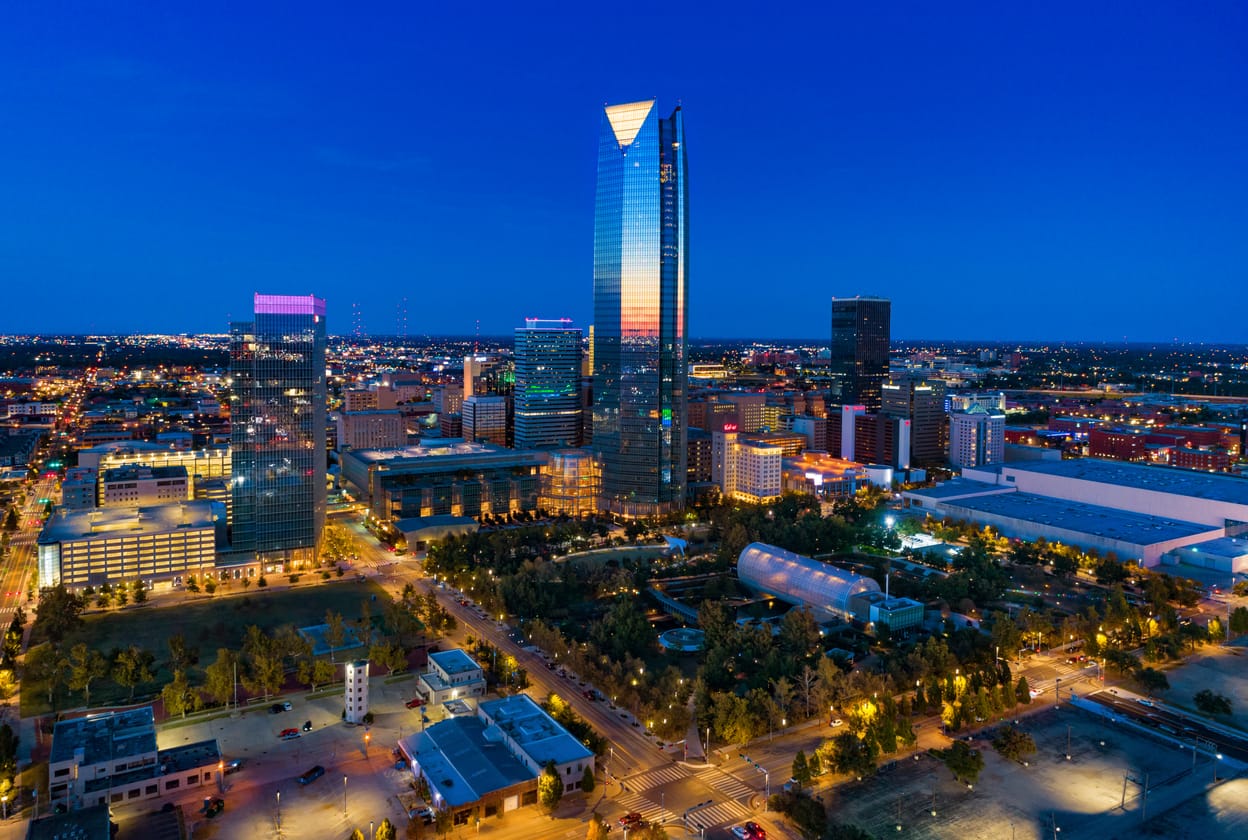Shipping from the State of Wisconsin to Oklahoma
Wisconsin became a U.S. territory just after the American Revolution and soon after began charming settlers looking for work in its mining, lumber, and dairy sectors. It was accepted into the union as the 30th state in the United States in 1848. Years before the Civil War, Wisconsin was a vital stop on the Underground Railroad, with many enslaved people passing through the state in their search for freedom in Canada.

This day, Wisconsin leads the United States in dairy production and is popular for of its superior cheddar cheese. The cheese is so rich, residents sometimes refer to themselves as “cheeseheads.” Reputable people from Wisconsin include architect Frank Lloyd Wright, magician Harry Houdini, and U.S. Army General Douglas MacArthur.
Shipping to the State of Wisconsin to Oklahoma
The land that today composes Oklahoma was added to the USA as part of the Louisiana Purchase of 1803. Throughout the 19th century, the U.S. government relocated Indian tribes from the southeastern United States to the area, and by 1900, over 30 Indian tribes had been transferred to what was originally called the Indian Territories. At the same time, ranchers in Texas started to relocate into the area searching for new pasture lands, as well as the government at some point opened the land to settlement, creating “land runs” in which inhabitants were enabled to go across the border at a specific hr to insurance claim homesteads.

Settlers that broke the law as well as crossed the boundary faster than enabled were called “Sooners,” which ultimately came to be the state’s nickname. Oklahoma ended up being the 46th state in 1907, complying with numerous acts that incorporated an increasing number of Indian tribal lands into the UNITED STATE area. After its inclusion in the union, Oklahoma ended up being a center for oil manufacturing, with much of the state’s early development coming from that industry. Throughout the 1930s, Oklahoma experienced droughts as well as high winds, ruining numerous ranches and developing the well-known dust bowl of the Great Clinical depression era.
